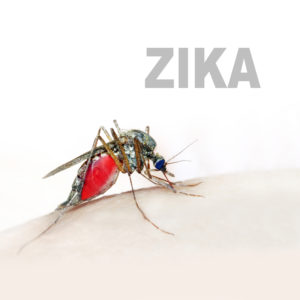 In the first half of 2018, the Centers for Disease Control and Prevention reported only 34 symptomatic Zika virus disease cases, down from more than 5,000 in 2016. But, as the CDC notes, that does not mean that the virus is no longer of concern: where you live, where you travel, and where your sex partner(s) travel can affect your chances of getting Zika. And the state of Florida is still vulnerable to outbreaks because many of its neighbors and visitors come from actively affected areas.
In the first half of 2018, the Centers for Disease Control and Prevention reported only 34 symptomatic Zika virus disease cases, down from more than 5,000 in 2016. But, as the CDC notes, that does not mean that the virus is no longer of concern: where you live, where you travel, and where your sex partner(s) travel can affect your chances of getting Zika. And the state of Florida is still vulnerable to outbreaks because many of its neighbors and visitors come from actively affected areas.
This summer, researchers in the Department of Immunology and Nano-Medicine at the Herbert Wertheim College of Medicine patented a new way of detecting the Zika virus in patients significantly faster and earlier than methods currently being used.
With nano-enabled biosensors, “The electrochemical system we have developed can detect the virus in 40 minutes or less, using a smaller sample and at a lower level of disease,” says Madhavan Nair, professor and chair of the Department of Immunology and Nano-Medicine.

The Zika virus, a mosquito-borne pathogen, often causes mild symptoms, which makes it difficult to diagnose in early stages. And every minute counts for pregnant women; Zika has been directly linked to fetal birth defects such as microcephaly, a rare neurological condition that results in abnormal brain development for which there is no treatment or cure.
“At the moment, Zika can only be detected after it produces antibodies, which can take from three days to two weeks,” says Nair.
In addition, present test methods are unable to pick up the presence of the virus at low levels, which can result in misidentification of the infection at an early stage. While there is no cure for the Zika virus, physicians have found that a cocktail of antibiotics can limit the virus’s impact if it is diagnosed early. The technology, supported by and developed at HWCOM, can rapidly and efficiently diagnose Zika even at minute levels.
Eventually, says Ajeet Kaushik, assistant professor and lead investigator, it will take the form of a microelectronic device, a SIM card-sized sensing chip that can plug into a cell phone and allow medical workers to work without a laboratory or electricity.
“All in all, this is a point-of-care diagnostic tool that is cost-effective, fast and specific and enables doctors to optimize therapy for patients in even the most remote areas,” Kaushik says.

Now that the technology is patented, there are several more steps that need to be taken before the device is built and ready to use.
“The platform is ready,” Kauskik says, “but we need samples so that we can validate the data. Data is everything.”
As they look for laboratories and/or hospitals that provide the virus samples, Kaushik and Nair are also working with FIU’s Office of Technology Management & Commercialization (OTMC)
to find a manufacturer who can develop the actual device.






